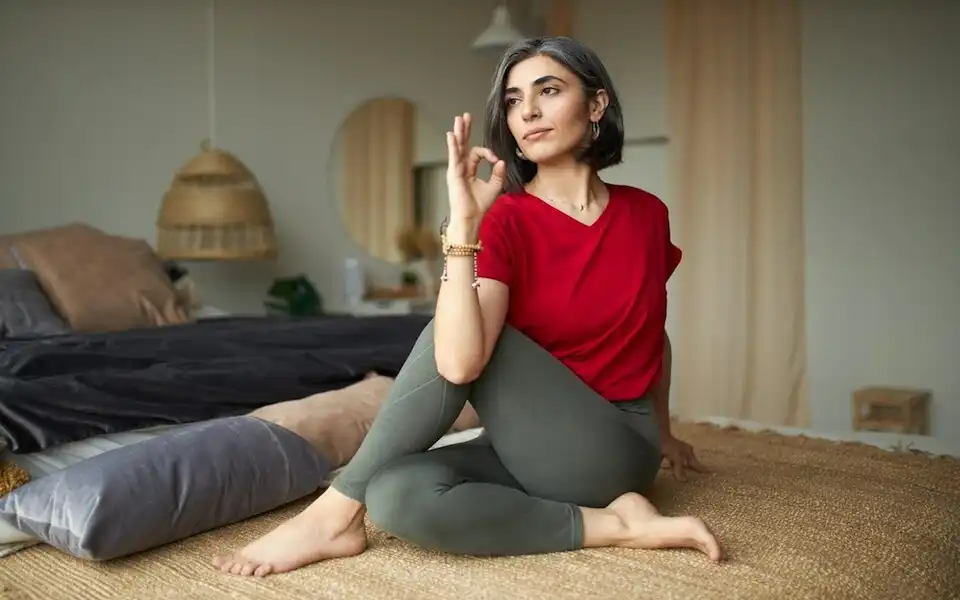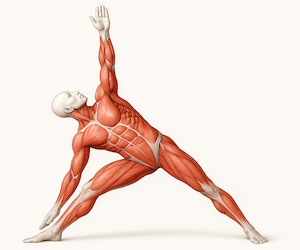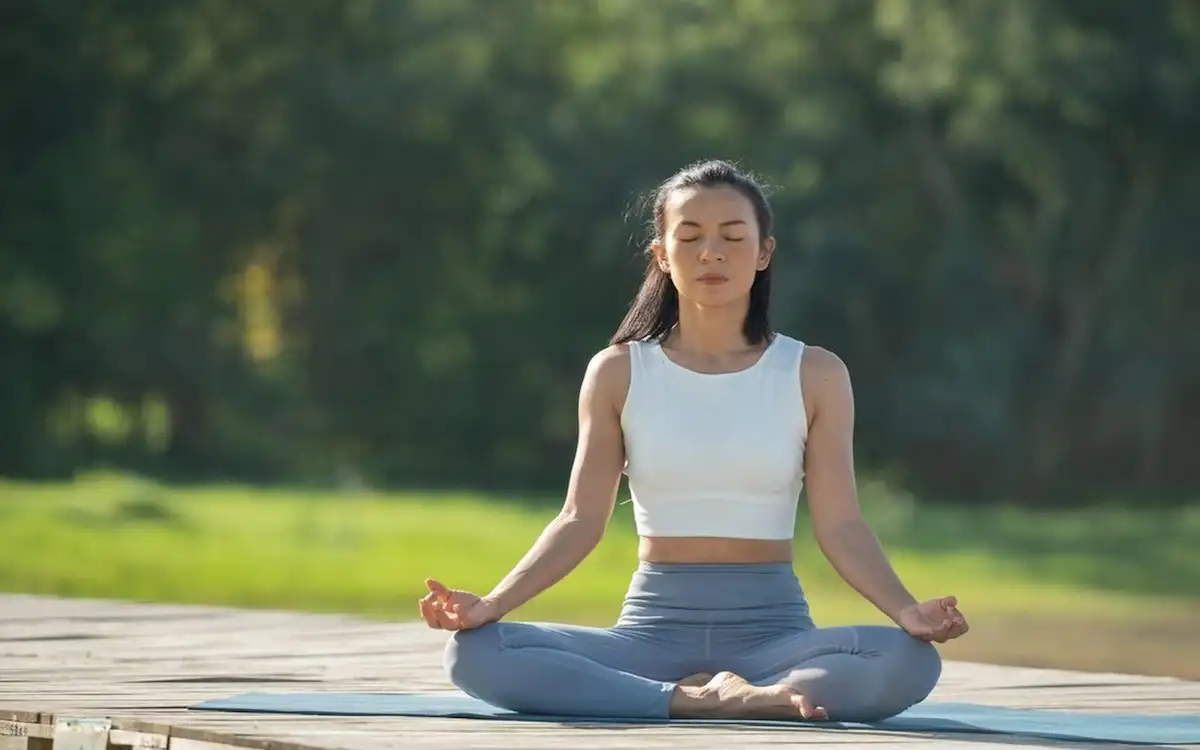Yoga at home is a great way to get in touch with your body and mind whenever you want. If you want to become more flexible, relieve stress, or feel calmer inside, home-based yoga lets you do it at your own pace without having to pay for a studio membership or take the time to travel. These days, people value both convenience and self-care. It is not only possible to learn how to do yoga at home, but it’s also very rewarding.
Setting Up A Yoga-friendly Space At Home
Setting aside a space just for your practice helps you be consistent and aware. An area that is quiet, clean, and free of other things should do the trick. If you put some thought into it, a corner of your living room, bedroom, or even a balcony can become your haven.
At the very least, buy a good yoga mat that won’t slip. If you’re new to yoga or just want to get more flexible, using props like yoga blocks, a strap, and a bolster can help you do better. Wear comfortable clothes and let air flow through them; your outfit should let you move around without having to keep adjusting it.
To improve the mood, you could use soft lighting, natural light, or lamps that can be turned down. Adding things that are relaxing, like plants, essential oil diffusers, or soft instrumental music, can help your body and mind know it’s time to relax.
Preparing For Your Yoga Session
It’s important to make a plan before you start doing poses. Choose the time of day that works best for you for yoga. Flows that wake you up work best in the early morning, while practices that calm you down work best in the evening.
Mental preparation is just as important. Take a few minutes at the start of each session to centre yourself. Say something simple to yourself, like “I am present” or “I honour my body.” Then close your eyes and take a few deep breaths. This small action can make it much easier to concentrate and be aware.
Do not skip the warm-up. Some easy moves that can help your body get ready for work are neck rolls, shoulder shrugs, and spinal twists. Do these along with pranayama breathing exercises to get your lungs moving and your nervous system calm down.
Choosing The Right Yoga Style For Home Practice
There are many types of yoga, so it’s important to pick one that fits your goals. Hatha yoga is often the best place to start for people who are new to yoga. The pace is slow, and the focus is on basic poses and breathing exercises. If you want something more exciting, Vinyasa Flow connects breath to movement, making the experience smoother and more physically challenging.
Restorative yoga and yin yoga are great ways to relieve stress and get more flexible. Holding passive poses for a few minutes is a part of these styles. They work on deeper connective tissues and help you relax deeply.
Try out different styles until you find the one that works best for your body and energy level. Sometimes you might need a hard practice, and other times you might need a gentle stretch.
Building A Beginner-friendly Routine
The long-term success is to start small. Start with sessions that last 15 to 20 minutes, and as your stamina grows, slowly add more time to them. A well-rounded routine should have these things:
- Warm-up: Light stretches, cat-cow pose, and breathing exercises.
- Core Practice: Fundamental poses such as Downward Dog, Warrior I and II, Tree Pose, Child’s Pose, and Seated Forward Fold.
- Cool-down: Supine twists, Happy Baby pose, and Savasana (corpse pose) to relax.
Instead of complexity or flexibility, pay attention to alignment and breath. When you need to, use props or different versions of poses. You’ll get stronger, more balanced, and able to think more clearly over time.
Utilising Online Resources And Tutorials
One of the best things about modern yoga is that there are so many resources available online. There are classes for all skill levels and styles on sites like YouTube that are free, and paid apps like Glo, Alo Moves, and Yoga with Adriene offer structured programs with professional teachers.
Before you choose a class, make sure the teachers are certified and can clearly explain poses and offer different options. Read reviews from other students and try out a few different teachers to find the right one for you and your learning style.
Videos can be helpful, but don’t forget to pay attention to your body. Don’t rush to keep up with the teachers, and don’t be afraid to pause or repeat a session if you need to.
Staying Consistent And Motivated
Setting up a regular practice at home takes discipline, especially since you don’t have the accountability of a studio. Consider your yoga time an important self-care appointment that you can’t miss. You could use alarms or a digital calendar to keep track of your times.
It can be helpful to keep track of your progress, either in a journal or an app. Write down how your body feels, what challenges you, and times when you feel emotionally clear.
If you start to lose motivation, switch up your routine by adding new flows, playlists, or themes, such as a heart-opening week or a balance-building week. You can also be more committed by taking part in a virtual yoga challenge or practising with a friend over video call.
Listening To Your Body And Practising Mindfulness
Presence, not perfection, is what yoga is all about. You can really tune in when you practice at home, away from other people’s opinions. Avoid multitasking and stay in the present moment by coordinating your breath with your movements.
Listen to what your body is telling you. Some discomfort is usual, but sharp pain is not. Do not force a pose. Instead, use props, rest in Child’s Pose, and focus on form over depth. Taking this mindful approach is good for your mental and physical health in the long run.
Conclusion
Doing yoga at home isn’t just a way to work out; it’s also a way to learn about yourself, be disciplined, and love yourself. Anyone can make a yoga routine that works for them in their living room if they have the right space, style, and attitude. Honour your body and start where you are. Let each breath lead you to balance, strength, and inner peace.




 How Much Weight Can You Lose In A Month?
How Much Weight Can You Lose In A Month?  What is Yoga and How Do You Do It?
What is Yoga and How Do You Do It?  Why You Should Choose a Clean Eating Lifestyle
Why You Should Choose a Clean Eating Lifestyle  Tips on Getting Enough Sleep at Night
Tips on Getting Enough Sleep at Night  The Impact Processed Foods Have on Your Body and Life
The Impact Processed Foods Have on Your Body and Life